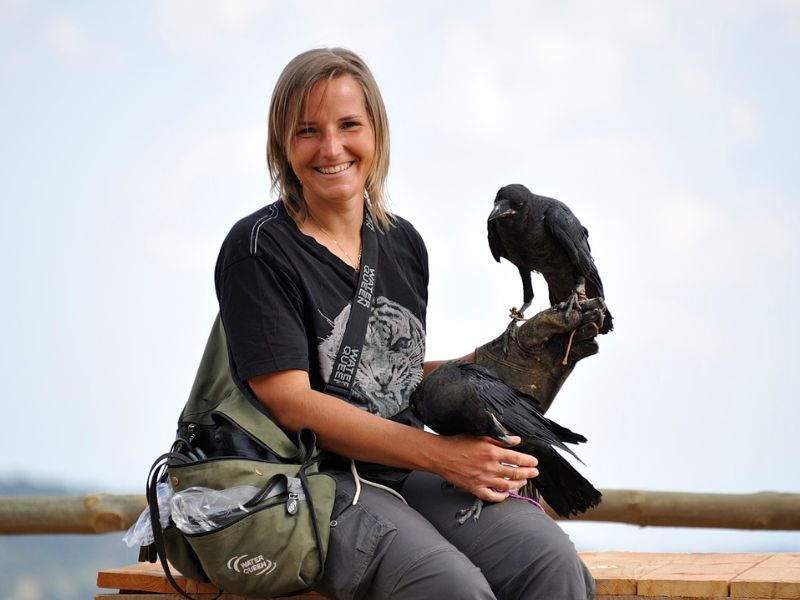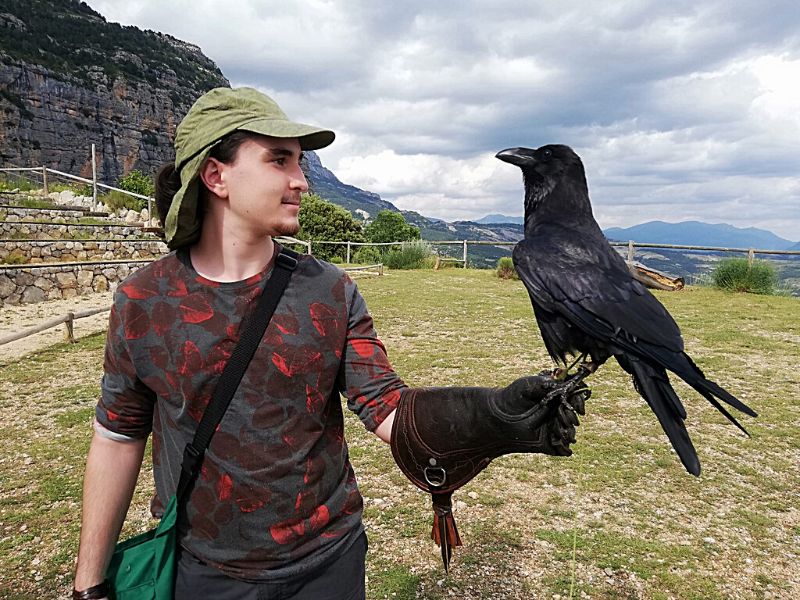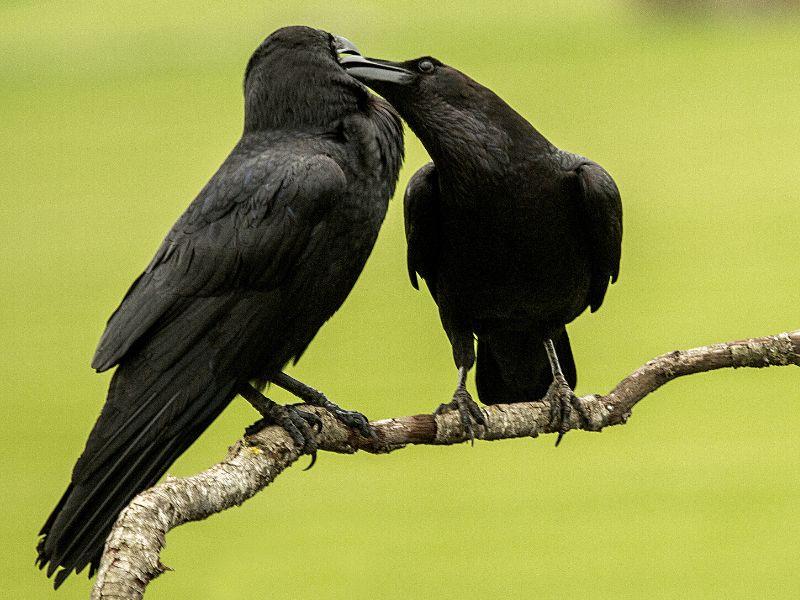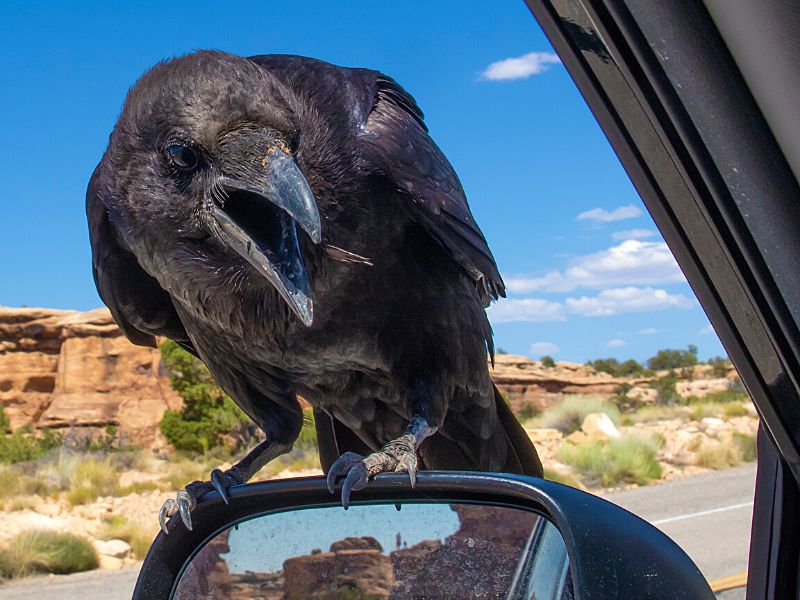
Raven as a pet: Legal part
The raven is a wild animal and keeping a raven as a pet is not allowed. However, if it is an animal bred in captivity, complying with legal requirements, its possession is possible.
In other words:
You cannot go up to the nest of a wild raven and steal its young or eggs. But yes, you can look for a legalized raven breeding center and buy the bird there.
Nevertheless:
Raven is not a pet. You have to have knowledge and a lot of experience to assume the enormous responsibility and involvement that comes with living with a raven.
What to know about a raven as a pet

Lifetime commitment
In captivity, ravens can live 40 years. Are you prepared for this commitment?
Ravens mate for life.
If a raven lives with you, it is very likely that it will choose you as a partner. Consequently, he will fiercely defend his right to your company. If you have family or plan to have one for the next 40 years, the raven will attack your family and friends with its strong beak. He won’t want to share you with anyone.
And not, ravens are not bad. They are faithful. If you are selfish enough to change their natural behavior and fixate their affection on you, count on the consequences.
Ravens intelligence
Ravens are highly intelligent animals. They need to satisfy their curiosity and need to overcome challenges on a daily basis. If you get tired of the raven and leave it in a cage, it doesn’t matter how big it is. The raven will get bored.
What does a bored raven do?
1. Self Destruct
If you don’t find enough time for the raven, it may direct its mental frustration against itself. It will begin to pluck the feathers or break them.
Example of a raven with a self-destructive tendency
Alfonso, an adult male raven who lives at the Zoo of the Pyrenees, arrived with mental problems. He broke his feathers himself. It looked like a penguin. In his previous home he lived in generous and well-decorated facilities, but he lacked contact with humans.
I have tried several ways to enrich his life, and yes, in exchange for pecks from him. In the end I have found a location between facilities with other animals. He can interact with them but he can’t injure them.
Today he is back to showing off healthy feathers and enchants our visitors with his hoarse voice when he greets them with “Que pasa, Grapo!”

2. Aggression
The bird that cannot meet its intellectual and movement needs may become aggressive. Yes, also against you.
Imagine him as a smart and active child during the confinement of COVID. Locked in the corridors of your house with an immense need for movement, the energy looks for a way to free itself.
The frustration of a raven that has no tasks can be turned against you. And I assure you, it can hurt you. So bad. If it comes to this, ask yourself a question: Is it the raven that is bad or is it you? For not taking care of this intelligent being which you have taken the responsibility to take care of in the way it needs.
Space that a raven needs in captivity
Ravens are animals that adapt easily.
Or not?

First years are totally happy, they will follow you everywhere. Their only concern is: I want to be next to my partner.
But:
On the 3rd year reaches sexual maturity. It is the time in which the ravens establish a sentimental relationship for life. They find a territory where they build the nest and stay in this territory for life.
Well, it is from this age when “the problems” begin.
Sensitivity to changes
Once the raven decides what its territory is, it will be stressed by the changes you make in this space.
We have tried to enrich Alfonso’s facilities with tools and games so that he makes a mental effort to get his food. But the effect was the opposite. He did not want new things in his environment. He broke his feathers again.
You can imagine how quickly we have removed these widgets from their installation.

Another raven from the Zoo of the Pyrenees, Phineas, participates in the flight display. The first and second year everything worked fine. But from his sexual maturity he began to stress about children’s strollers and wheelchairs. Over time they even get annoyed by selfie sticks and crutches.
They are objects that are usually not present in the amphitheater.
Although Phineas has his usual setup, he considers the amphitheater his territory.
When that raven was young he trusted my judgment 100%.
Now he is an adult and our relationship is mutual. He wants to protect me from possible dangers. Things you don’t know are considered threatening.
Can I release the raven once I get tired of it?

No. La respuesta es estrictamente no.
Ravens that suffer natural behavioral disturbance caused by living with humans cannot return to the wild. They are doomed to live in captivity for life.
In the wild they would be attacked by other ravens. Nature is designed to seek balance and exterminate unnatural anomalies.
At the same time it would be dangerous for humans. The raven would get close to people and could injure them. Which a naturally raised raven would never do.
If you have a raven as a pet and you want to get rid of it, look for a specialized center. There the animal can live in controlled conditions adapted to its needs.

Conclusion
Ravens are sensitive and extremely intelligent animals.
Although keeping them in captivity is permitted, I strongly discourage you from keeping a raven as a pet.
Living with a raven has the effect of sacrificing your private life.
Enjoy the presence of ravens in nature. It is there that they are happy.